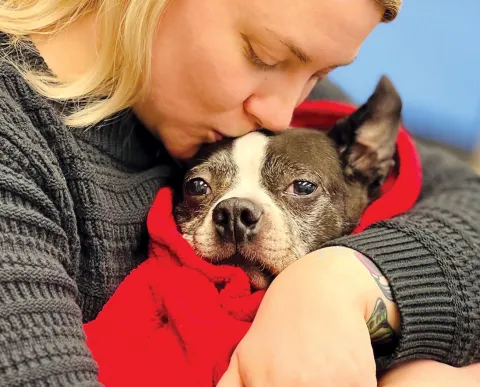Before fostering
- Involve The Whole Family: Involve the whole family in the fostering conversation. Will kids be responsible for feeding the new 'roommate'? How will your family tolerate future adoption? Do your current pets tolerate other animals ok? The new pet is a big change for everyone, so allow everyone to weigh in, and suggest how they would like to help care for the pet.
- Pet-Proof Your Home: Adjusting to a new environment can be a daunting task for new pets. Many animals can jump onto high surfaces or squeeze into the smallest of spaces. To protect foster pets in a new environment and to safeguard your belongings, it's recommended to animal-proof your entire house. Pay attention to any small or dangerous objects, such as pins, needles, paper clips, nails, staples, thread, string, rubber bands, caustic/toxic chemicals, mothballs, plants, and any other items that are potentially dangerous. We also recommend performing a check at pet-eye-level (on hands-and-knees or squatting) to ensure you aren't missing anything.
- Other pet-proofing tips: Animals are attracted to electrical cords, TV cords, telephone cords, and curtains. These items should all be blocked so they can’t get at them.
After becoming a foster
- Vaccination and Treatment: Make sure your pet is up-to-date on vaccinations. Many infectious diseases for pets are preventable through vaccinations, including Canine Influenza, Leptospirosis (which can be transmitted to people), and Lyme. The cost of prevention is far less than the cost of the treatment and helps to keep pets healthy and free from disease. Speak with your foster coordinator to find out about foster pet requirements.
- Check Your Pet’s Food: Pets at varying ages have different nutrient requirements, so consider assessing your pet’s food and adjust accordingly. For example, if your dog is overweight, certain weight management pet food formulas can help them lose weight, along with exercise. Consult your veterinarian on any changes to your pet’s food, and always accurately measure your pet’s food vs. “eyeballing it.”
- Groom Your Pet: It is recommended to professionally groom your pet every four to six weeks. Between salon appointments, use at-home grooming tools such as a cat or dog-specific toothbrush and specially formulated toothpaste, a nice rubber brush to help de-shed and invigorate the skin and coat, ear cleaner and cotton balls to gently cleanse the ears, and wipes for cleaning around the face, mouth, and eyes.
How to get started
Visit your local shelter, or animal welfare organization and complete necessary forms and background check.









